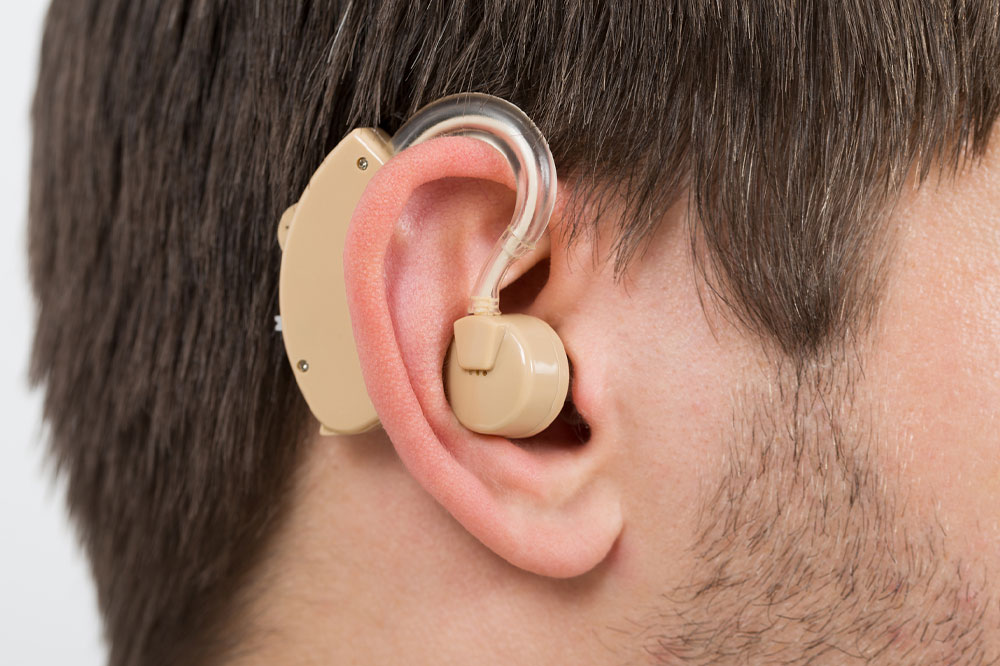
Hearing aids – Everything you need to know
Hearing aids help deaf people by boosting their ability to hear. The device works by magnifying the vibrations of sound entering the ear and is highly effective for people suffering from sensorineural hearing loss caused due to injury to the tiny sensory or hair cells present in the inner ear. The uninjured hair cells catch the sound delivered by the hearing aid and transmit them to the brain as neural signals through the auditory nerve.
Read to know more about hearing aids.
Parts of a hearing aid
Hearing aids are primarily battery-operated electronic gadgets that are available in various types to suit individual requirements. However, all digital aids comprise of mainly four parts:
- Microphone – grasps sound from around.
- Computer chip – amplifies the sound from the microphone and processes it.
- Speaker – transmits these amplified sounds to the ear.
- Battery – powers the electronic device.
Different types of hearing aids
There are primarily four types of hearing aids prescribed by medical practitioners.
Behind-the-ear (BTE) – This type of hearing device is mainly suggested for people having mild to severe hearing issues. The device is designed to rest behind the ear and comes with a transparent tube that can be attached to the earmold. The different parts of the device, such as the microphone, controls, and battery, are all clubbed together in a single compartment and designed to stay behind the ear. This device is easy to clean and handle. They are also sturdy for everyday use. The design of this device also makes it a preferred choice for young children as it can be securely attached to the earmold. The device has to be replaced as the child grows.
On-the-ear – These types of hearing aids are also referred to as Mini BTE. The device has a small design, which makes it easy to fit on the ear. The device comprises an extremely thin tube that connects it to the ear canal. These aids also have an earpiece that is comfortable to wear. They even allow lower occlusion along the ear canal.
In-the-ear – This type of hearing aid has all its parts in a single shell which is fitted on the outer part of the ear. These aids are also comparatively larger than the in-the-ear aids making them comfortable to handle for some people.
In-the-canal (ITC) or completely-in-the-canal (CIC) aids – These devices come enclosed in small cases, which fit wholly or partly in the ear canal. These are the smallest hearing device available and provide cosmetic as well as listening benefits. However, the tiny construction of the hearing aid makes it problematic to handle and adjust for some users.
Choosing a hearing aid
Check the noise filtering mechanism – People working in a noisy environment should opt for a device that cancels background noise.
Smartphone connectivity – This feature will aid in better controlling the hearing device remotely through a smartphone app.
Visibility – There are both visible and virtually invisible devices available based on individual preferences one can make a choice.
Battery – There are both single-use battery devices and rechargeable battery aids available. The user can choose as per their requirement.
Trial – There are multiple types of hearing aids available. Trying out various types in a store will help in analyzing which device will be the most comfortable for the user.
Cost of hearing aids
The cost of hearing devices tends to vary as per the type and brand. However, the price of these devices can approximately range from $1400 to $6000, excluding the charges of fitting, insurance, and testing.
As you can see, there are several options in the type of hearing aids; choose the one that best suits your needs. It is best to consult a doctor to know what you need before venturing out to get a set of hearing aids. This will help you get the best ones without much hassle.




